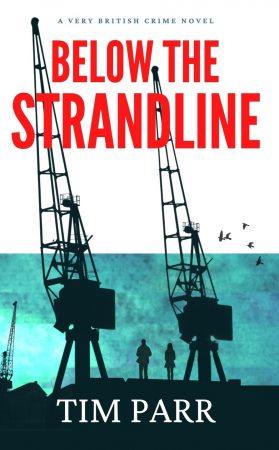BELOW THE STRANDLINE
Dark, gripping debut crime novel
Survival – Betrayal – Justice
“Her chest fired up with pain at every gurgling intake of breath. She mustered a cry for help but managed just a whimper. She tried again and a hoarse scream was carried away in the wind. Then she heard the sound of the door opening …”
SURVIVAL – The decade is the Seventies. Jerry runs away from a chequered past to start a new life in the city. He wants to be in control of his own destiny, to live by his own rules and above all to protect the girl he is falling in love with. He finds himself homeless, at first sleeping rough on the streets until opportunity comes his way. Jerry’s actions lead readers to question how far they might go to survive, to better their futures, to right the wrongs inflicted on them and to protect those that they care about. Would they be prepared to deliver their own version of justice?
BETRAYAL – In a mansion house in London, former spymaster Sir Peter is lavishly entertaining the influential members of a powerful secret society that operates above the law. When someone threatens to expose the identity of this secretive club, they close ranks and seek to recover the list of names that has been hidden. When others fail spectacularly, Sir Peter instructs his devoted butler, an ex commando, to step in.
JUSTICE – Police investigate a suspicious fall after a woman is found fighting for her life. The case escalates to a murder hunt and the plot thickens as the search intensifies to find the killer. Female detective Janice Morgan plays a pivotal role in uncover-ing a brutal gang but fears for her safety mount when she goes missing. The chase is on to find the mystery ringleader and stop a major shipment of drugs from reaching Britain’s streets.
Themes in the story will challenge the moral compass. Readers will be rewarded with human stories and richly drawn characters in Tim Parr’s debut crime novel, Below The Strandline.
Targeted Age Group:: Adult
What Inspired You to Write Your Book?
I was a child of the Sixties, grew up in the Seventies and later spent some years in London, first as a student and then in work. The city had a gritty edge to it. I was drawn to images of decay and abandonment, particularly in the docklands where carcasses of old abandoned warehouses stood on silted up, a stone's throw from the River Thames. I remember being shocked on my first evening going out with a bunch of other students from my halls to Leicester Square and seeing a poor man lying there attended by an ambulance man, his throat slit from ear to ear. Revelers simply walked on by. I made a mental note of that.
I was one of the pioneering windsurfers who sailed on the docks and still remember the sweet, oily taste of that water. I noted that down as well.
I am intrigued by the stark contrasts found in many cities. Prosperity and poverty are often uncomfortably close neighbours. Going back to my time in London, I would see a street of gentrified mews houses with geranium-filled window boxes, but turn a corner and there would be people fighting for survival, sleeping rough, trading on street corners or under the railway arches.
I have always kept observational notes in dog-eared notebooks and sketched out plot lines on the backs of crumpled envelopes, generally shoved at the back of my sock drawers. A quest for socks with no holes in them led to the discovery of my notes and in turn I found the raw ingredients and inspiration for my debut crime novel.

